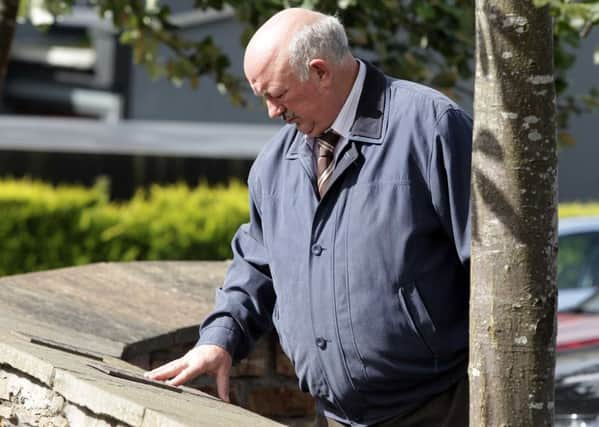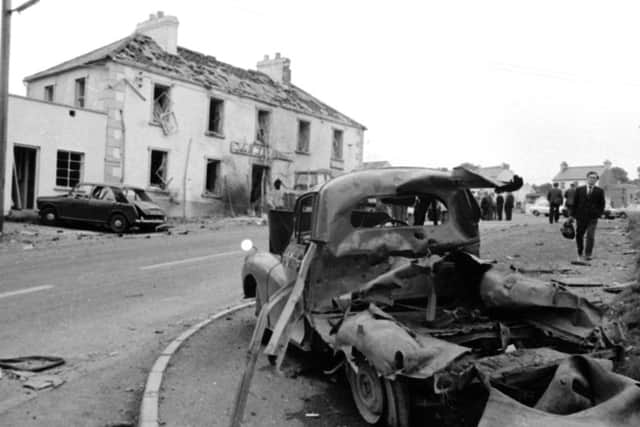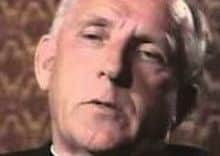Parallel drawn with Claudy atrocity as de-classified files shine light on priest case


Both the campaign group Innocent Victims United (IVU) and a relative of one of those killed in the Claudy bombings have spoken out over the case of Patrick Ryan.
They both drew a parallel between the suspicions surrounding him and the activities of the late Father James Chesney, who was suspected of involvement in the 1972 Claudy massacre (for which no-one has been charged).
Advertisement
Hide AdAdvertisement
Hide AdThe newly released documents about Patrick Ryan are minutes of discussions among the UK cabinet on December 1 and 15, 1988, published by the National Archive.


They show that the issue of the former priest – who was believed to be in his 50s at the time he was detained on mainland Europe – seriously strained diplomatic relations.
He was initially held by the Belgians, but they had shown an unwillingness to hand him over to the UK.
The documents note that Ryan had gone on hunger strike, adding that the “religious dimension loomed large in Belgian politics”.
Instead he was transferred to the Republic.


Advertisement
Hide AdAdvertisement
Hide AdRyan’s detention came against the backdrop of an IRA campaign on mainland Europe; for example, earlier in 1988, the IRA had shot three UK personnel in Holland.
No specific IRA incidents are mentioned in the cabinet papers. However, they state that Ryan “was undoubtedly in possession of a great deal of vital information for combating terrorism in the Irish Republic as well as the UK”.
According to the New York Times that month, Ryan denied being a member of the IRA or of Sinn Fein.
The Dublin government failed to extradite him – despite the signing of the Anglo-Irish Agreement, which was supposed to herald greater co-operation between the UK and Ireland.


Advertisement
Hide AdAdvertisement
Hide AdThe records show that Margaret Thatcher said on December 1 that the affair “sapped confidence in [the Irish government’s] willingness to combat terrorism”, and made the Agreement appear a “hollow sham” to some.
The then-Sectrary of State Tom King had told his colleagues on December 15 that the Garda “seldom if ever” arrested offenders, and that “the Irish remained as emotional as ever” about the idea of handing Irish suspects to UK authorities.
IVU said in a statement that the new cabinet documents “confirm the steps that were taken to effectively subvert the prospect of Fr Patrick Ryan standing trial for what were extremely serious terrorist-related offences”.
Ryan had been a member of the Pallottine Catholic order. He left it in 1973.


Advertisement
Hide AdAdvertisement
Hide AdIt is unclear whether he retained any title or connection to the church after that.
However, the group said that there were similarities in the cases of Ryan and Fr Chesney, saying they were “given special dispensation and treatment” because they had been “masquerading” as Christian clergy.
David Temple, 62, is the brother of William Temple, who was among the nine people murdered by the IRA when it planted bombs in the village of Claudy. William was 16 when he died (see article on the 40th anniversary of the atrocity).
Mr Temple, a retired welder now living in Donemana, said: “The Irish government should have extradited him [Ryan]. That’s just plain and simple.”
Advertisement
Hide AdAdvertisement
Hide AdHe also believes the “Roman Catholic church has a lot to answer for”, and said that in the cases of both James Chesney and Patrick Ryan the Catholic Church should have “put their cards on the table”.
“It’s like the sex scandals,” he said.
“They should come forward and distance themselves, and show the people how clean they are.
“They should turn ‘round and admit responsibility for what part these people played in society.”
PALLOTTINE RESPONSE:
Criticism and questions over the case were put to the Catholic Church’s Irish communication headquarters.
Advertisement
Hide AdAdvertisement
Hide AdIt would only confirm that Ryan had left the Pallottine order in 1973, and referred the News Letter to the order for anything else.
Father Derry Murphy, head of the order, said he knew little of Ryan and was not in a position to offer comment on his case.
However, speaking personally and in general terms, he said: “Anybody who’s right minded wouldn’t engage in or wouldn’t support any kind of subversive activity.”
‘SOME ACTED AS IF GUILT WAS PROVEN’:
The cabinet records describe Ryan as a “former Roman Catholic priest”, who was wanted in the UK “on a number of serious charges reflecting deep involvement with the PIRA”.
Advertisement
Hide AdAdvertisement
Hide AdThe UK government put in motion plans to have him extradited from the Republic.
The cabinet documents say that the proper paperwork was presented to the Irish authorities, but that they had shown a “total inability to act in a timely fashion”, and “allowed Ryan to go to ground”.
According to a New York Times report on December 14, 1988, Irish authorities ultimately refused extradition.
The cabinet papers note that some UK government supporters “had spoken of Ryan as though his guilt had been proved, and this had been used to support claims that Irish terrorist suspects could not expect a fair trial in the United Kingdom”.